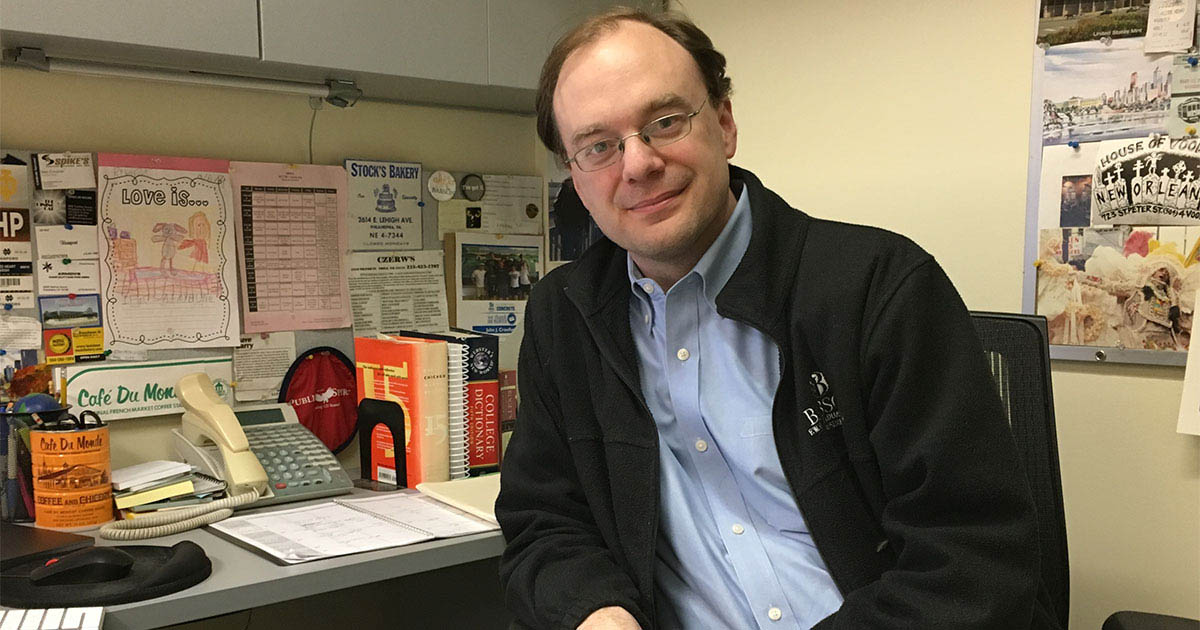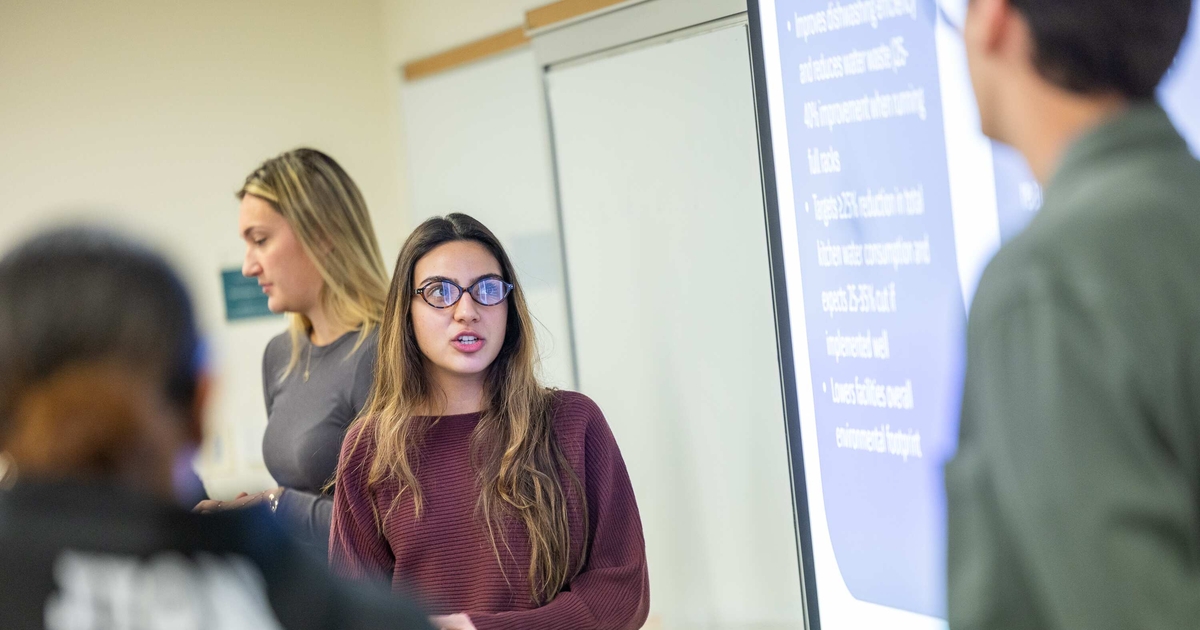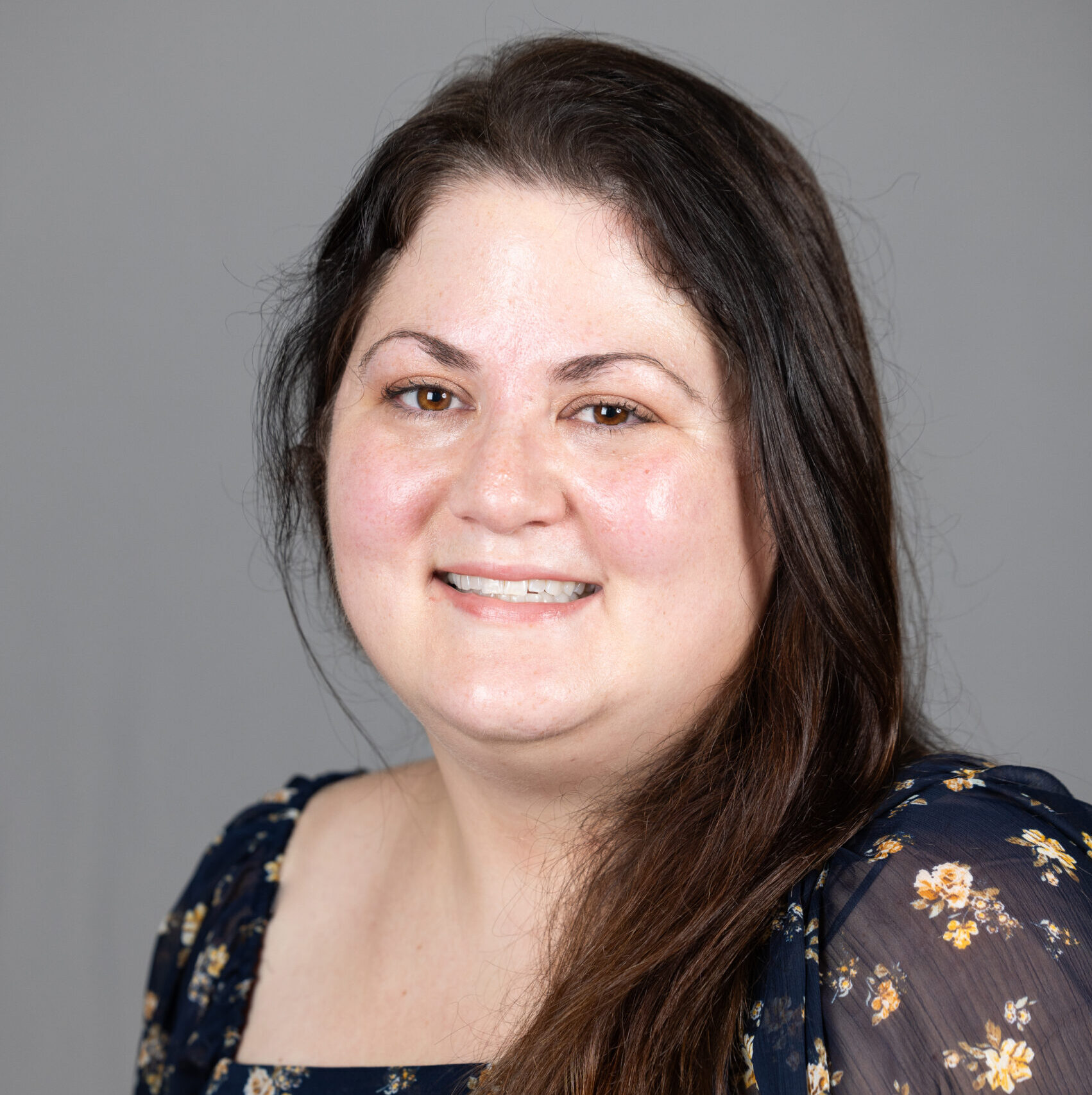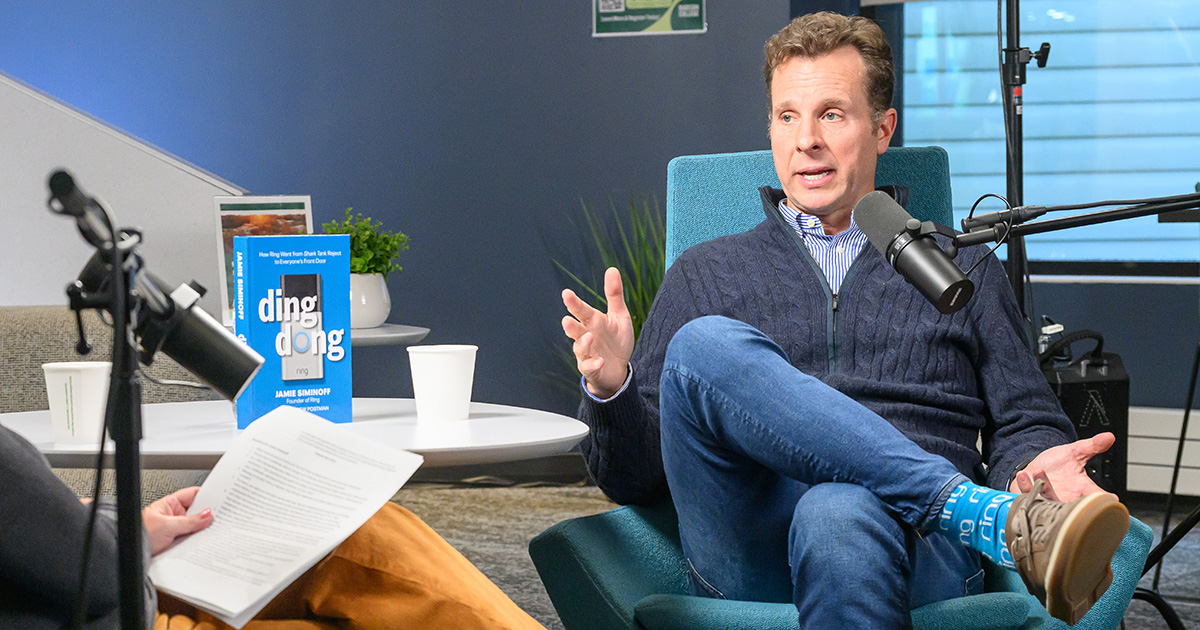Learning by Design: How Babson’s Expanding Campus Fuels Innovation and Collaboration

Babson College earned high marks for experiential learning and overwhelming student success when The Wall Street Journal named it the No. 2 Best College in America for the second year in a row, but the College also dominated in a lesser-known category: learning facilities.
Students and alumni surveyed for the WSJ/College Pulse rankings pointed to Learning Facilities as one of Babson’s standout strengths. Among the top 10 schools, Babson ranked first for Learning Opportunities, Preparation for Career, Recommendations, and Learning Facilities, topping colleges such as Stanford, Yale, Princeton, and Harvard.
“The impact of Babson’s world-class teaching and learning environment on The Wall Street Journal’s ranking methodology speaks volumes of campus facilities,” said Provost and Executive Vice President Ariel Armony. “I’m proud of the work of our faculty and support staff and their commitment to preparing the next generation of entrepreneurial leaders to make the world a better place. Their efforts across classrooms, specialty labs, and centers and institutes foster an inclusive ecosystem where students can thrive. These facilities contribute to building an environment that advances creativity, innovation, and bold ideas.”
The recognition for learning facilities, in particular, reflects more than just new buildings and upgraded technology—it highlights Babson’s deep investment in creating spaces that spark collaboration, innovation, and hands-on learning.
“The high ranking for facilities is testament to the consistent investments that Babson College makes in interactive learning spaces on campus,” said Wendy Murphy, associate dean of undergraduate academic programs and professor of management. “We cultivate a living-learning community that is particularly evident with our newest space in the Herring Family Entrepreneurial Leadership Village (HELV).”
Expanding Campus Innovation
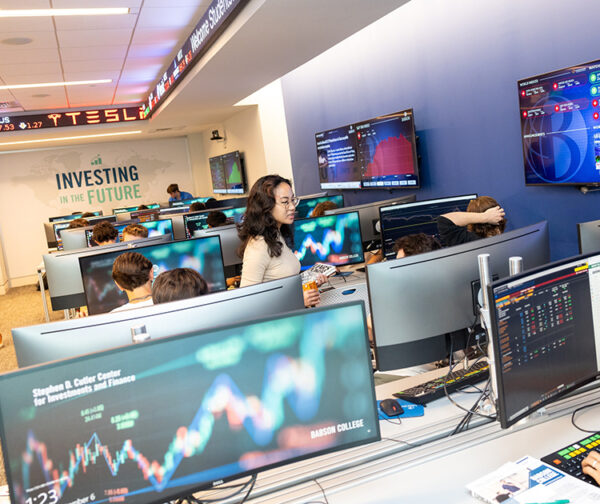
Connected to Babson’s largest residence hall, the new HELV brings together student life and learning in one dynamic hub. It includes a café, an interactive global lounge for video and in-person discussions, classrooms outfitted with the latest technology and movable panels for flexibility, small breakout spaces, and a study lounge with reservable conference rooms. Its design mirrors Babson’s experiential curriculum, where most business courses emphasize team-based projects.
HELV is one of several new or reimagined spaces that make collaboration a natural part of campus life. The Babson Commons, attached to Horn Library, offers an open, garden-like setting anchored by the Centennial Café. Inside, the Cutler Center for Investments and Finance provides an immersive lab with Bloomberg terminals and flexible study areas designed for teamwork.
Innovation also thrives in the Weissman Foundry, a makerspace shared with neighboring Olin College, where students prototype ideas, experiment across disciplines, and even collaborate over meals in the Foundry’s social kitchen. The Schlesinger First Year Innovation Center, Murphy added, gives first-year students a “messy” workspace attached to a residence hall—open 24 hours for creativity on their own schedules.
Technological Facilities
Over the past three years, Babson’s investment in learning has expanded beyond physical infrastructure.
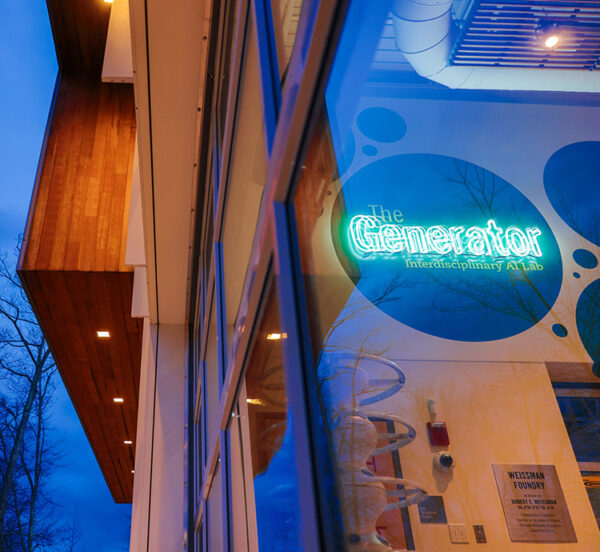
“In addition to the physical infrastructure, we have also invested in critical software applications to augment classroom learning,” said Patty Patria, chief information officer. “Babson has been a leader integrating AI into the learning experience. In early 2024, we offered Copilot to all students, showing Babson’s commitment to equity early on.”
With the launch of the new C. Dean Metropoulos Institute for Technology and Entrepreneurship and The Generator, the College’s interdisciplinary AI lab, students not only use artificial intelligence tools but also learn to build them—creating bots, agents, and large language models, Patria said. AI is also incorporated in foundational courses such as Foundations of Management and Entrepreneurship (FME), which requires first-year students to team up, brainstorm, and launch their own business ventures in one year.
According to The Wall Street Journal, the Learning Facilities category measures student satisfaction with classrooms, libraries, and campus technology. The high rating underscores a larger truth about Babson’s approach: The environment itself is a catalyst for entrepreneurial thinking.
Building for the Future
The commitment to boosting Babson’s learning spaces doesn’t stop with existing buildings. A historic campus-wide capitol project is already underway, marking a new phase of investment in the campus to expand spaces that foster entrepreneurial learning and leadership. Expansion plans include:
- A new flagship Executive Lodge and Conference Center (ELCC)—a 77,600-square-foot facility with more than 70 guest rooms, a large banquet space, restaurant, rooftop terrace, and fitness area. Most importantly, it will include 8,900 square feet of technology-rich classrooms for executive and professional learning. Officials broke ground on the project this month with a mid-2027 opening.
- The HELV Phase 2 project will add 128 new student beds, a 275+-seat dining venue, and 13 additional classrooms and learning spaces, while also addressing deferred maintenance across campus. Construction is scheduled to begin in May 2027 and be mostly completed by August that year.
These projects reinforce Babson’s belief that entrepreneurship is learned by doing—and that the spaces where students and professionals learn matter.
“Our curriculum is highly experiential,” Murphy said. “Most of our courses include team projects, so these spaces meet the students’ needs for collaboration and hands-on learning.”
Posted in Community, Entrepreneurial Leadership


